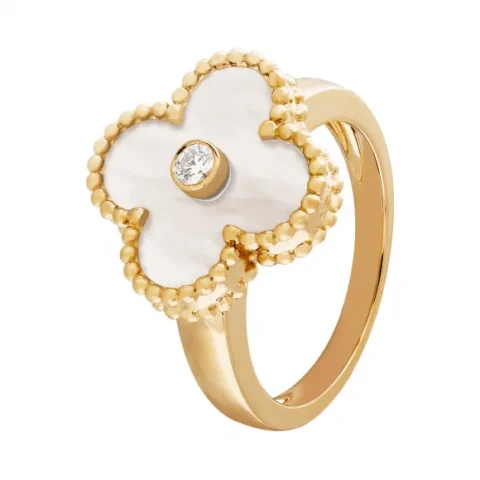The Nawanagar Necklace by Jacques Cartier
The Nawanagar Necklace by Jacques Cartier

The Nawanagar Necklace is an emerald and diamond necklace, created by Cartier. It was the property of the Maharajah of Nawanagar, Ranjitsinhji Jadeja. Christie’s advertised its sale. The descendants of the former Maharajah were made aware of the auction. Ranjitsinhji Jadeja’s descendent, Shatrushalyasinh Jadeja, the Jamsahib of Nawanagar, wanted to learn the truth about the necklace. He claimed that his ancestor, Ranjitsinhji Jadhav, had sold the necklace to someone, who had used the piece for their own personal use.
Cartier’s emerald and diamond necklace
Cartier’s emerald-and-diamond Nawanagar necklace dates from the early 1930s and features 17 large emeralds. The stones, which are of Colombian origin, weigh a total of 277 carats. Three of the stones are nearly seventy carats.
The necklace was commissioned in 1937 by a maharaja, and the jeweler used a collection of Burmese rubies from the royal vault of India to create the necklace. The necklace was later modified to fit the woman, and it was worn by celebrities such as Gloria Guinness and Truman Capote at the 1966 Black & White Ball.
The necklace was not meant to stay with the Maharaja, however. After the Maharaja’s death in 1933, it was passed down to his nephew. The necklace was not meant to remain with the family for long, and was returned to the Maison in the 1950s.
The Nawanagar necklace is perhaps the most important jewel from Cartier’s Nawanagar collection. It features a double-line of first-class diamonds and two square pink diamonds. A 12-carat green diamond, called the Queen of Holland diamond, was also set in the centre of the necklace.
The necklace was inspired by the Maharajas of India and the European courts. The jewels were originally made for the Maharajas and were reset by Cartier, who incorporated touches of Parisian style when designing the necklace for the western customer. The necklace was designed in a bib-style style with accents of diamonds.
The pendant is the focal point of the necklace, with an emerald-cut emerald in the base of the pyramid. The other two emeralds are arranged on either side of the emerald, each with a long axis parallel to the vertical. Small round diamonds line the sides of the necklace.
Double-stranded pearl necklace
The emerald and pearl necklace was created by artisans in Nawanagar during the 19th century. Its design was inspired by Indian jewelry and the regal splendour of the great Indian Maharajas. The necklace is one of the most valuable items in India. It was also a favorite of Maharajah Ranjithsinhji of Nawanagar. The necklace has recently been the subject of an auction at Christie’s auction house in New Bond Street.
Its total carat weight was over 500 carats. The necklace was so impressive that Jacques Cartier described it as the world’s largest cascade of coloured diamonds. Sir Digvijaysinhji Jadeja wore the necklace at state functions and was noted for his taste in jewellery. Although he was an avid collector of jewellery, the necklace is not still on display, except in photographs and archival images.
Double-row of round diamonds
Jacques Cartier’s Nawanagar necklace is an iconic piece of jewellery that dates back to 1931. It consists of two strands of white diamonds, one of which is a 136-carat “Queen of Holland” diamond. The necklace was also the centrepiece of the silver screen movie Ocean’s Eight.
The necklace was designed by Jacques Cartier, who was manager of the London branch of the renowned jewelry house. The necklace is a masterpiece of art deco design. Its two-rows of round diamonds are complemented by seventeen large emeralds, which are of Colombian origin. The necklace is comprised of a total weight of 277 carats, with three of the largest emeralds weighing 70 carats.
The necklace is made from the finest quality of gold and diamonds. The diamonds were carefully cut by hand. The double-row of diamonds was used to create a delicate and intricate design. It also had a dazzling array of coloured stones, including pink, blue, and even brown.
Transformable necklace
The 500-carat Nawanagar necklace was one of the finest diamond pieces ever created. It was praised by Jacques Cartier, who dubbed it the most exquisite cascade of coloured diamonds in the world. This necklace was worn by the prince of Jamnagar, Sir Digvijaysinhji Jadeja, on various state occasions. His love for jewellery inspired him to extend the collection.
Originally made by Cartier in 1931 for the Maharaja of Nawanagar, the necklace has been recreated by top jewelers. This masterpiece is currently on display at the Cartier Mansion in New York City. Its design is based on the necklace worn by the Maharaja.
The Nawanagar necklace is one of the finest jewels from India’s history. The city of Nawanagar was once a feudal backwater, ruled by the Jadeja dynasty, which claimed descent from Lord Krishna. However, in 1907, the city of Nawanagar entered a new era. The new ruler of the city, Ranjitsinghji, renamed it as “Nawanagar” and proclaimed it a city of distinction.
The Maharajah of Nawanagar Ranjithsinhji, was an avid collector and connoisseur of diamonds and gems. He had an exquisite collection of jewels, which he inherited from his ancestors. The jewelry was created by the renowned jeweler Jacques Cartier, who was then the head of the firm’s London branch.
The Nawanagar Necklace by Jacques Cartier


